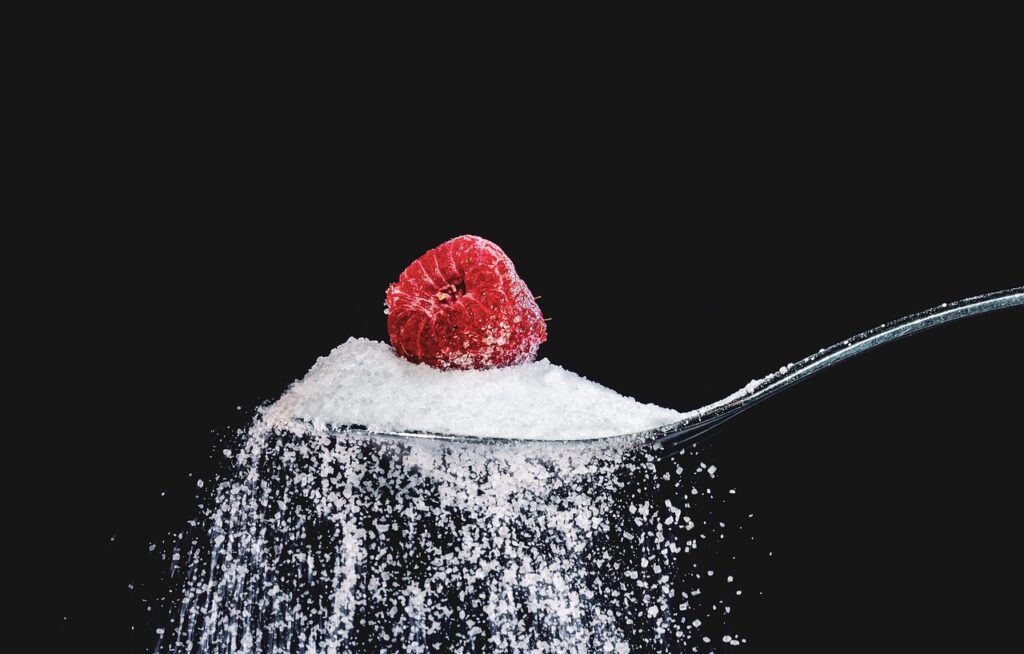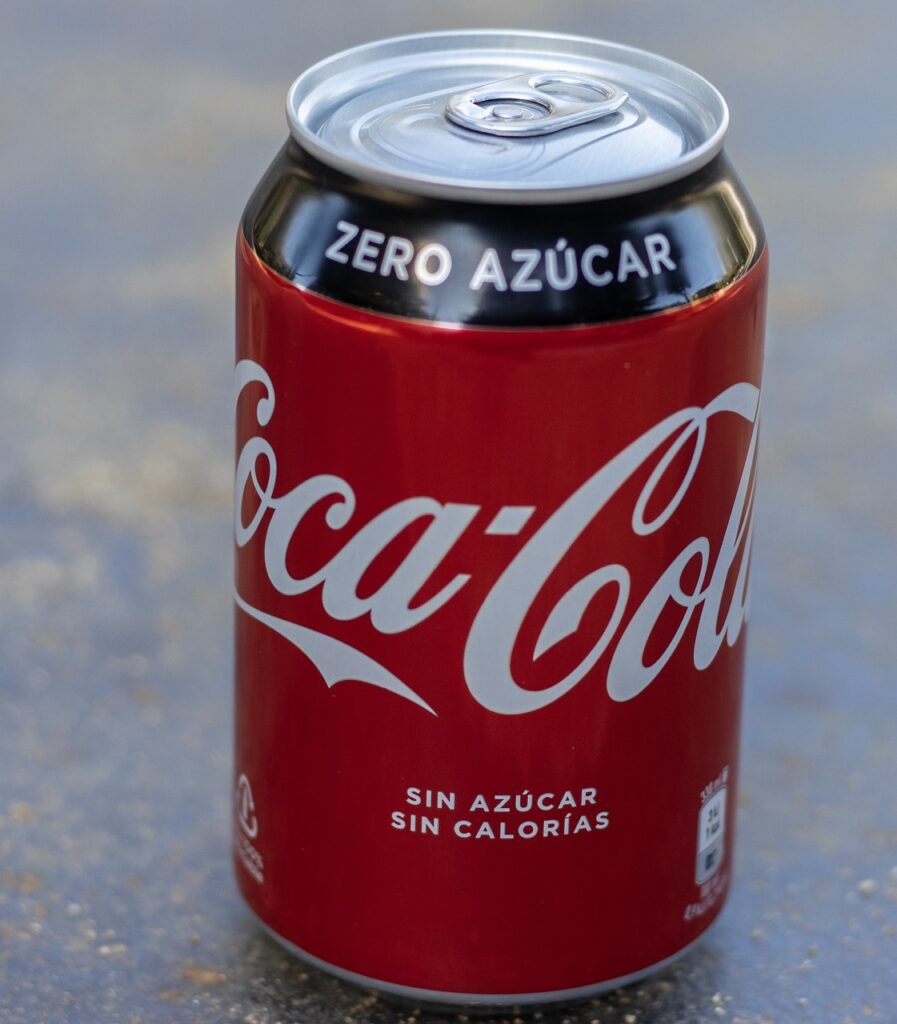Are you searching for a healthier alternative to sugar but feeling overwhelmed by the plethora of options available? Look no further! In this comprehensive guide, we will delve into the world of high-intensity sweeteners, exploring the pros and cons of popular choices like stevia and sucralose. With the rising concerns about the negative effects of excessive sugar consumption on our health, it’s no wonder that people are turning to these sweeteners to satisfy their cravings without the guilt.
But with so many options on the market, it can be challenging to separate fact from fiction and make an informed decision. That’s where we come in. We will break down the science behind these sweeteners, uncovering their origins, taste profiles, and potential health benefits or risks. Whether you’re a health-conscious individual, a diabetic, or simply curious about alternative sweeteners, this guide will equip you with the knowledge you need to make the right choice for your lifestyle.
What are high-intensity sweeteners?
High-intensity sweeteners, also known as artificial sweeteners or non-nutritive sweeteners, are substances that provide a sweet taste to foods and beverages without adding significant calories or carbohydrates. They are much sweeter than regular table sugar (sucrose) and are used as sugar substitutes in various products.
These sweeteners are commonly used by individuals who want to reduce their sugar intake or manage conditions such as diabetes or weight management. They can be found in a wide range of food and drink products, including diet sodas, sugar-free desserts, chewing gum, and tabletop sweeteners.

Sources of high-intensity sweeteners
High-intensity sweeteners can be derived from various sources, including natural sources and chemical synthesis. Here are some common sources of high-intensity sweeteners:
Examples of high-intensity sweeteners from natural sources:
- Stevia: Derived from the leaves of the Stevia rebaudiana plant, which contains sweet-tasting compounds called steviol glycosides.
- Luo han guo (Monk fruit) extract: Obtained from the fruit of the Siraitia grosvenorii plant, which contains naturally occurring sweet compounds called mogrosides.
Examples of high-intensity sweeteners from chemical synthesis:
- Aspartame: Produced by combining the amino acids aspartic acid and phenylalanine.
- Saccharin: Synthesized from toluene, a petroleum derivative.
- Acesulfame potassium (Ace-K): Created by chemical modification of acetoacetic acid.
- Sucralose: Made by chemically modifying sucrose (table sugar) to replace three hydroxyl groups with chlorine atoms.
- Neotame: Derived from aspartame but chemically modified to enhance stability and sweetness.
- Advantame: Derived from aspartame but chemically modified to enhance stability and sweetness.
- Cyclamate: Synthesized from cyclohexylamine and a sulfonating agent.
- Alitame: Created through a chemical synthesis process.
It’s important to note that the production and specific methods for obtaining these sweeteners may vary between manufacturers. Additionally, natural sweeteners like stevia and monk fruit extracts may undergo further processing and purification steps to isolate the sweet compounds for use as high-intensity sweeteners.
The Different Types of High Intensity Sweeteners
When it comes to high-intensity sweeteners, there are several options to choose from. Each one has its own unique characteristics and uses. Let’s take a closer look at some of the most popular ones:
High-Intensity Sweeteners from Natural Sources:
| Sweetener | Sweetness Intensity | Regulatory Status |
| Stevia | 200-400 times sweeter | Generally Regarded as Safe (GRN No. 768) |
| Luo han guo extract (Monk fruit extract) | 150-300 times sweeter | Generally Regarded as Safe (GRAS) |
| Thaumatin | 1,600-3,000 times sweeter | Generally Regarded as Safe (GRN No. 738) |
| Glycyrrhizin | 50–100 times sweeter than sucrose | Regulated in some countries, limited use in food/beverages. |
| Brazzein | 1,000 times sweeter | Generally Recognized as Safe (GRAS) for specific uses |
| Curculin | 35,000 times sweeter than sucrose | Regulated, limited use in food/beverages |
| Mabinlin | 500-1,000 times sweeter | Regulated, limited use in food/beverages |
| Miraculin | Varies | Regulated, limited use in food/beverages |
| Monellin | 3,000 times sweeter | Regulated, limited use in food/beverages |
| Pentadin | 5,000 times sweeter | Regulated, limited use in food/beverages |
| Perillartine | 1,500 times sweeter | Regulated, limited use in food/beverages |
| Rubusoside | 300 times sweeter | Generally Regarded as Safe (GRAS) |
| Thaumatin | 2000-3000 times | GRN No. 738 |

High-Intensity Sweeteners from Artificial Sources:
| Sweetener | Sweetness Intensity | Regulatory Status |
| Aspartame | 200 times sweeter | Approved in some countries |
| Sucralose | 600 times sweeter | Approved in some countries |
| Saccharin | 200-700 times sweeter | Approved in some countries |
| Acesulfame potassium (Ace-K) | 200 times sweeter | Approved in some countries |
| Neotame | 7,000-13,000 times sweeter | Approved in some countries |
| Advantame | 20,000 times sweeter | Approved in some countries |
| Cyclamate | 30-50 times sweeter | — |
| Alitame | 2,000 times sweeter | — |
Stevia: A Natural Alternative
Derived from the leaves of the Stevia rebaudiana plant, stevia is a natural, zero-calorie sweetener that has gained popularity in recent years. It is known for its intense sweetness, which is said to be up to 200 times sweeter than sugar. Stevia has a clean, slightly herbal taste that some people find appealing.
One of the main advantages of stevia is its low glycemic index, making it a suitable option for diabetics. However, it is important to note that stevia may have a bitter aftertaste, which can be off-putting to some individuals. When using stevia as a sugar substitute, it is best to start with small amounts and gradually increase the quantity to find the right balance for your taste buds.
Sucralose: A Popular Choice for Low-Calorie Products
Sucralose is another high-intensity sweetener that has gained popularity in the food and beverage industry. It is made from sugar through a process that replaces some of the sugar molecules with chlorine atoms. This modification gives sucralose its sweetness without the calories.
One of the advantages of sucralose is its stability at high temperatures, making it suitable for baking and cooking. It also has a taste profile similar to sugar, without the bitter aftertaste associated with some other sweeteners. However, some studies suggest that sucralose may have negative effects on gut health and insulin response in some individuals. As with any sweetener, moderation is key.
Aspartame: The Controversial Sweetener
Aspartame is a low-calorie sweetener that has been used in a wide range of products for decades. It is made by combining two amino acids, phenylalanine and aspartic acid. Aspartame is known for its intense sweetness and is approximately 200 times sweeter than sugar. It is commonly used in diet sodas, chewing gum, and other sugar-free products.
However, aspartame has been the subject of controversy, with some studies linking it to various health issues, including headaches, dizziness, and even cancer. Despite these concerns, regulatory authorities around the world have deemed aspartame safe for consumption within recommended limits.
It’s important to note that individuals with a genetic disorder called phenylketonuria (PKU) should avoid aspartame, as their bodies cannot process phenylalanine. Recently, there is a move by the WHO to declare aspartame a possible cancer risk.
Saccharin: The Oldest Artificial Sweetener
Saccharin is one of the oldest artificial sweeteners and has been in use for over a century. It is approximately 200-700 times sweeter than sugar and is often used in tabletop sweeteners and diet products. Saccharin has a slightly bitter aftertaste, which can be masked when combined with other sweeteners.
Despite its long history of use, saccharin has been the subject of controversy due to studies suggesting a link to bladder cancer in rats. However, subsequent research has shown that these findings may not be applicable to humans. Regulatory authorities have deemed saccharin safe for consumption, but it’s always a good idea to consume it in moderation.
Advantages and Disadvantages of High Intensity Sweeteners
High-intensity sweeteners offer a range of advantages and disadvantages compared to sugar. Let’s explore some of the key points:
Advantages
- Reduced Calorie Intake: High-intensity sweeteners provide sweetness without the added calories of sugar, making them an attractive option for individuals looking to manage their weight or reduce their overall calorie intake.
- Suitable for Diabetics: Many high-intensity sweeteners do not significantly impact blood sugar levels, making them suitable for individuals with diabetes who need to monitor their carbohydrate intake.
- Variety of Choices: With a wide range of high-intensity sweeteners available, individuals can choose one that suits their taste preferences and dietary needs.
Disadvantages
- Artificial Aftertaste: Some high-intensity sweeteners, particularly the artificial ones, may leave an unpleasant aftertaste. This can vary depending on personal preferences and sensitivity to taste.
- Health Concerns: While high-intensity sweeteners are generally considered safe for consumption, some studies have raised concerns about potential health risks. It’s important to be aware of these risks and consume sweeteners in moderation.
- Limited Baking Application: Not all high-intensity sweeteners are suitable for baking or cooking at high temperatures. Some may lose their sweetness or break down when exposed to heat, limiting their use in certain recipes.
High Intensity Sweeteners and Health Concerns
The safety of high-intensity sweeteners has been a topic of debate among health professionals and consumers alike. While regulatory authorities have approved these sweeteners for consumption within recommended limits, some concerns have been raised:
- Metabolic Effects: Some studies suggest that high-intensity sweeteners may disrupt the body’s metabolic processes, leading to weight gain or metabolic syndrome in some individuals. However, more research is needed to fully understand these effects.
- Weight management: Some studies suggest that consuming high-intensity sweeteners may not lead to weight loss or could even contribute to weight gain. This could be due to factors such as increased cravings for sweet foods or compensation behaviors where people may consume additional calories from other sources. In fact, WHO advises not to use non-sugar sweeteners for weight control.
- Gut Health: There is evidence to suggest that high-intensity sweeteners may alter the composition of gut bacteria, potentially affecting digestion and overall gut health. However, the long-term implications of these changes are still unclear.
- Cravings and Appetite: Consuming high-intensity sweeteners may not necessarily satisfy cravings for sweetness, leading to increased consumption of other sweet foods or beverages. This can potentially contribute to overeating or weight gain.
- Blood sugar control: High-intensity sweeteners do not significantly affect blood sugar levels, making them popular among people with diabetes. However, there is some evidence that they might still have an impact on glucose regulation and insulin response, which could vary depending on the individual and the specific sweetener used.
It’s important to note that the available evidence on these health concerns is mixed, and individual responses to high-intensity sweeteners can vary. As with any dietary choice, moderation is key.
Food safety knowledge is for all!

Every consumer deserves to have high quality and safe food. …Read more!

Using High Intensity Sweeteners in Cooking and Baking
High-intensity sweeteners can be a great alternative to sugar when it comes to cooking and baking. However, it’s important to keep a few things in mind:
- Sweetness Intensity: High-intensity sweeteners are much sweeter than sugar, so you’ll need to adjust the amount accordingly. Start with a small quantity and taste as you go to ensure the desired level of sweetness.
- Texture and Moisture: Sugar not only adds sweetness but also contributes to the texture and moisture of baked goods. When using high-intensity sweeteners, you may need to experiment with other ingredients to achieve the desired texture and moisture.
- Heat Stability: Not all high-intensity sweeteners are suitable for baking at high temperatures. Some may lose their sweetness or break down when exposed to heat. Make sure to choose a sweetener that is heat-stable if you plan to use it in baking.
The Future of High Intensity Sweeteners
As the demand for healthier alternatives to sugar continues to grow, the future of high-intensity sweeteners looks promising. Researchers are constantly exploring new compounds and technologies to develop sweeteners that taste great, have minimal health risks, and can be used in a variety of applications.
The goal is to find sweeteners that can provide the same sweetness as sugar without the negative side effects. While we may not have found the perfect sweetener just yet, ongoing advancements in the field of high-intensity sweeteners offer hope for a future where we can enjoy our favorite treats without compromising our health.
Conclusion
In conclusion, high-intensity sweeteners like stevia, sucralose, aspartame, and saccharin offer alternatives to sugar for those looking to reduce their sugar intake. Each sweetener has its own unique characteristics, taste profiles, and potential health benefits or risks. While high-intensity sweeteners are generally considered safe for consumption, it is important to be aware of potential health concerns and consume them in moderation.
Whether you’re a health-conscious individual, a diabetic, or simply curious about alternative sweeteners, this comprehensive guide has provided you with the knowledge you need to make an informed choice. So go ahead, embark on a sweet journey towards a healthier, happier you!
Our Blog ↗
Read the latest from our blog
Ask a Question ↗
Ask a question and get answers from our community
Give Feedback ↗
We value your feedback.


